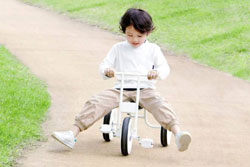- What are the signs of bullying?
- What strategies can be used to reduce bullying?
- What does the future hold for managing bullying?
What is bullying?

How common is bullying?
Bullying is a common problem for primary school and high school aged children. About 10% of Australian children reported being bullied at primary school based on the above stated definition. However in some countries such as the United Kingdom the rate is much higher, with up to 25% being bullied. Australian teachers when surveyed underestimated the percentage of children experiencing bullying in their school; they reported less than half the rate to what the children did. Bullying does not occur to all children.
There are some children more at risk than others. Obese and overweight children are more likely to be bullied than other children (for more information read Obesity & Bullying in children). Boys are bullied about twice as often as girls. Boys also tend to be exposed to more physical bullying (such as pushing, shoving) than girls. Generally, younger children (primary school aged) are bullied more than high school aged children.
The rate of bullying is thought to peak at 17% around the age of 7 years, and fall to about 4% by 15 years. There is a small rise in bullying in boys at age 12-13 years; which is probably related to the increased number of physically bigger and older children when they start high school.
What are the effects of bullying?

- Sleep disturbances
- Bed wetting
- Abdominal pain
- Headaches
- Feeling sad
Researchers have studied the long term effects of bullying in children. These studies have shown that children who are bullied are more likely to suffer from poor self-esteem, depression, drug abuse and suicide in later life. Children who are bullied are more likely to suffer from depression, which is common. Less commonly, children can develop a somatisation disorder; where they may have physical complaints e.g. nausea or pain, which are due to an illness of the mind (psychological cause). Rarely, children who are bullied can develop body dysmorphic disorder as adults; where the person becomes overly preoccupied about a real or imaginary defect of their appearance.
It is not just victims of bullying who can develop problems in adult life. The child who is a bully is more likely to have problems forming healthy relationships as an adult. The child who bullies is also more likely to suffer from depression and suicidal thoughts. Parents and teachers need to be able to recognise the signs of bullying in children in order to avoid these serious psychological side effects.
What are the signs of bullying?

What strategies can be used to reduce bullying?
Bullying is most common in primary school, so this seems to be a good opportunity to deliver anti-bullying campaigns. Studies show young children are sympathetic towards victims of bullying more-so than older children. This means that anti-bullying programs may be more effective in primary school than in high school. A number of studies have shown that a school based anti-bullying campaign can reduce bullying by 30-50%. Those campaigns which involve multiple strategies are more effective than a single-focus intervention. An alternative approach is to offer individual therapy (with a psychologist or doctor) as a treatment for bullies. This has been shown to reduce anger and improve relationships in children who bully others. Paediatricians are specialist doctors who deal with children. They are especially involved in treating and screening of children with many different problems. They have special skills in talking to children and may help parents to discuss any concerns about bullying with their child.
What does the future hold for managing bullying?

References
- Collier, J. Longmore, M. Brinsem, M. [editors] (2006) Oxford Handbook of Clinical Specialties. [Viewed online; Books@Ovid, April 23, 2007] Oxford University Press: Oxford.
- Domino, F. [editor] (2007 ed) Body Dysmorphic Disorder [book chapter] in The five minute clinical consult. Lipincott Williams and Wilkins: Philadelphia.
- Spector, N. Kelly, S. (2006) Paediatrician’s role in screening and treatment: bullying, prediabetes, oral health. Current Opinion in Paediatrics 18: 6; 661-670.
- Buttriss, J. (2006) Stark reality – statistics on childhood obesity. Nutrition Bulletin 31: 3; p175-177.
- NSW Department of Health. Childhood Obesity. [Cited 16th August 2006] [http://www.health.nsw.gov.au/obesity/adult/background/background.html]
- Olweus, D. (1994) Bullying at school: long term outcomes for the victims and an effective school based intervention program. In L.R. Huesman (ed) Aggressive behaviour; current perspectives. P 97-130. New York: Plenum.
- Rigby, K. Slee, P. (1991) Bullying among Australian School children: Reported behaviour and attitudes towards victims. Journal of Social Psychiatry 131: 5; 615-627.
- Janssen, I. Craig, W. Boyce, W. Pickett, W. (2004) Association between overweight and obesity with bully behaviours in school-aged children. Paediatrics 113: 5; p 1187-1194.
- Bell, L. Byrne, S. Thompson, A. Ratnam, N. Blair, E. Davis, E. (2007) Increasing body mass index z-score is continuously associated with overweight children, even in the healthy weight range. Journal of Clinical endocrinology and Metabolism 9: 2; 517-522.
- Vreeman, R. Carroll, A. (2007) A systematic review of School-Based interventions to prevent bullying [review article] Archives of Paediatrics and Adolescent Medicine 161: 1; p78-88.
- Brown, S. Birch, D. Kancherla, V. (2005) Bullying perspectives: experiences, attitudes, and recommendations of 9 to 13-year-olds attending health education centers in the United States. Journal of School Health 75; p384-392.
All content and media on the HealthEngine Blog is created and published online for informational purposes only. It is not intended to be a substitute for professional medical advice and should not be relied on as health or personal advice. Always seek the guidance of your doctor or other qualified health professional with any questions you may have regarding your health or a medical condition. Never disregard the advice of a medical professional, or delay in seeking it because of something you have read on this Website. If you think you may have a medical emergency, call your doctor, go to the nearest hospital emergency department, or call the emergency services immediately.







